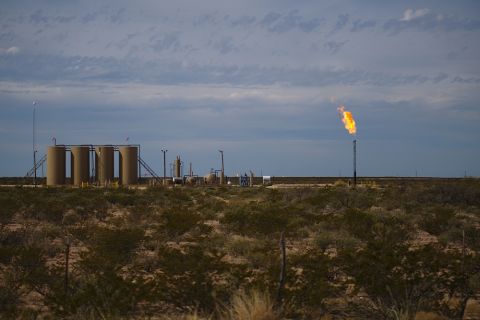Where the future of energy is concerned, very few outside of the industry understand how bleak it could become without a little cooperation. "In a sense, as an industry, we have become a victim of our own success," Rex Tillerson, president, ExxonMobil Corp., said at a recent IPAA/Tipro meeting in Houston. "We have made energy readily and easily available, so that people just click on a light switch now and don't even think about it. If there's one challenge we have, it's making people understand the importance and the enormity of this issue." The reality is that without energy supply, there can be no economic growth. "Economic growth requires reliable, affordable energy supplies," Tillerson said. "There is a misplaced view in our society of the role alternative energy sources will play in the future. "Wind and solar will be supplying less than 1% of all energy by 2030. Any notions for a silver bullet in the next decade for developed countries will not be conceivable. If something is going to replace oil, it's going to have to be very large." By all accounts, the demand for energy is growing by leaps and bounds as world economies continue to expand. "By 2030, the total amount of energy used will increase by two-thirds, even with conservation efforts, with the fastest-growing demand taking place in Asia due to increased vehicle sales in China," he said. "By 2030, oil demand could reach 5 billion gallons per day. That's a 50% increase over demand today." Though it's clear the industry is fast approaching its production peak with the resources currently available, improving technology has already made previously unavailable resources common, and will continue to do so. "Today, the industry is able to recover more than double what it could in the 1920s due to unconventional resources," Tillerson said. "Oil-shale deposits are beginning to look very promising to us. Oil shale has an estimated 3 trillion barrels in place-it's highly concentrated. Recovery factors are dependent on emerging technologies. With the use of these technologies, I believe there are sufficient resources remaining in the world to supply projected demand." Natural gas is the energy source with the fastest-growing demand. "Gas could be the main source of energy by 2030. It's not currently as easily transported as oil, but this is changing with globalization of gas markets." With new technologies for liquefied natural gas (LNG), global LNG supply is projected to increase four times by 2020, he said. "To continue meeting U.S. gas demand will require both LNG and Arctic gas. Cost pressures can be moderated through ongoing LNG development." Tillerson believes one of the keys to solving global energy challenges is to continue to make the industry attractive to potential investors. "The sheer scale and magnitude of investments needed to meet increasing energy demand is enormous because this is an enormous business," he said. "We must have access to potential areas of new resources and we must have stability to attract investments." The industry has always met the world's energy needs, and Tillerson believes it must continue to do so. -Taryn Maxwell
Recommended Reading
Balticconnector Gas Pipeline Back in Operation After Damage
2024-04-22 - The Balticconnector subsea gas link between Estonia and Finland was severely damaged in October, hurting energy security and raising alarm bells in the wider region.
Waha NatGas Prices Go Negative
2024-03-14 - An Enterprise Partners executive said conditions make for a strong LNG export market at an industry lunch on March 14.
Balticconnector Gas Pipeline Will be in Commercial Use Again April 22, Gasgrid Says
2024-04-17 - The Balticconnector subsea gas link between Estonia and Finland was damaged in October along with three telecoms cables.
Pembina Pipeline Enters Ethane-Supply Agreement, Slow Walks LNG Project
2024-02-26 - Canadian midstream company Pembina Pipeline also said it would hold off on new LNG terminal decision in a fourth quarter earnings call.
TC Energy's Keystone Oil Pipeline Offline Due to Operational Issues, Sources Say
2024-03-07 - TC Energy's Keystone oil pipeline is offline due to operational issues, cutting off a major conduit of Canadian oil to the U.S.


